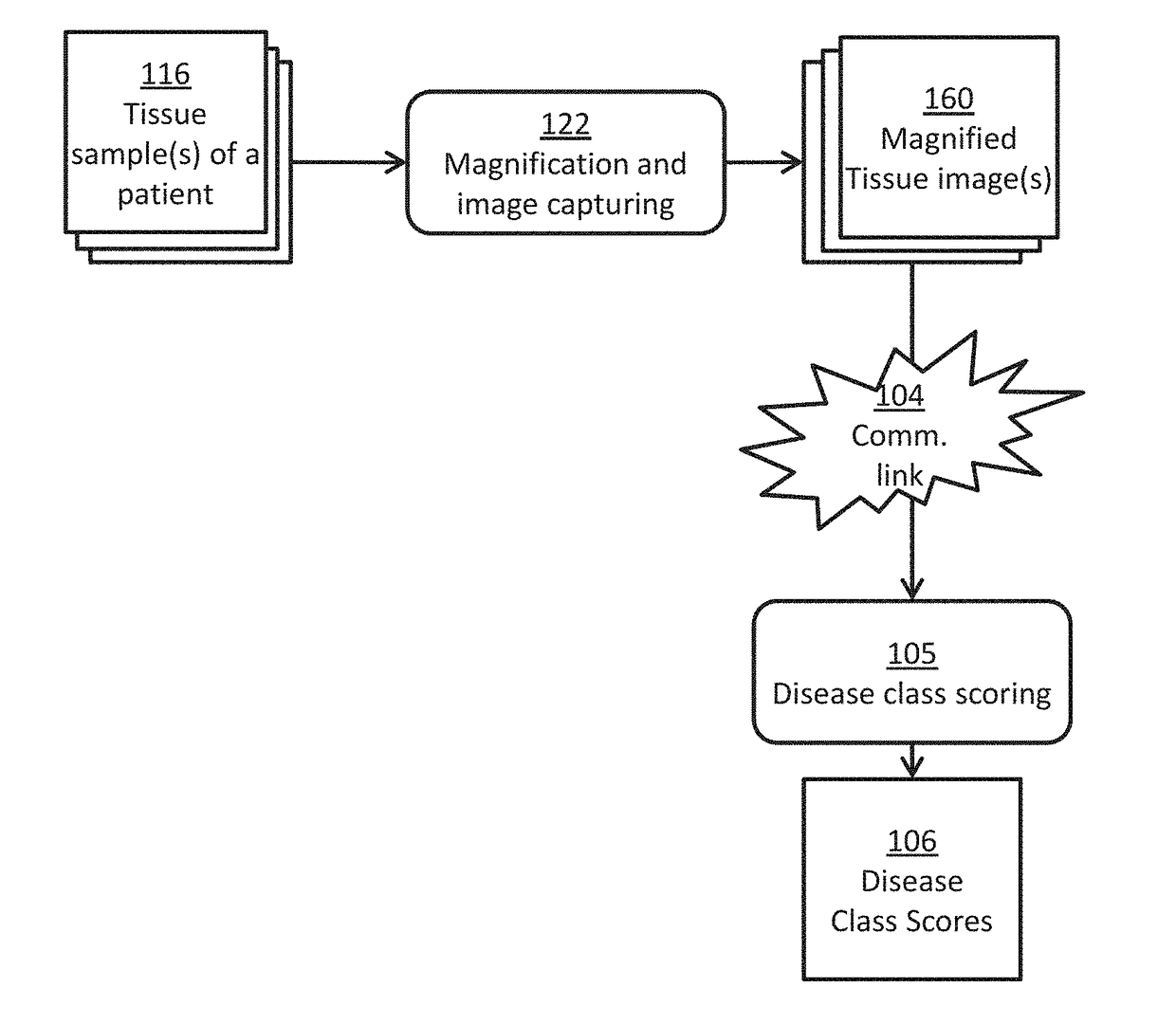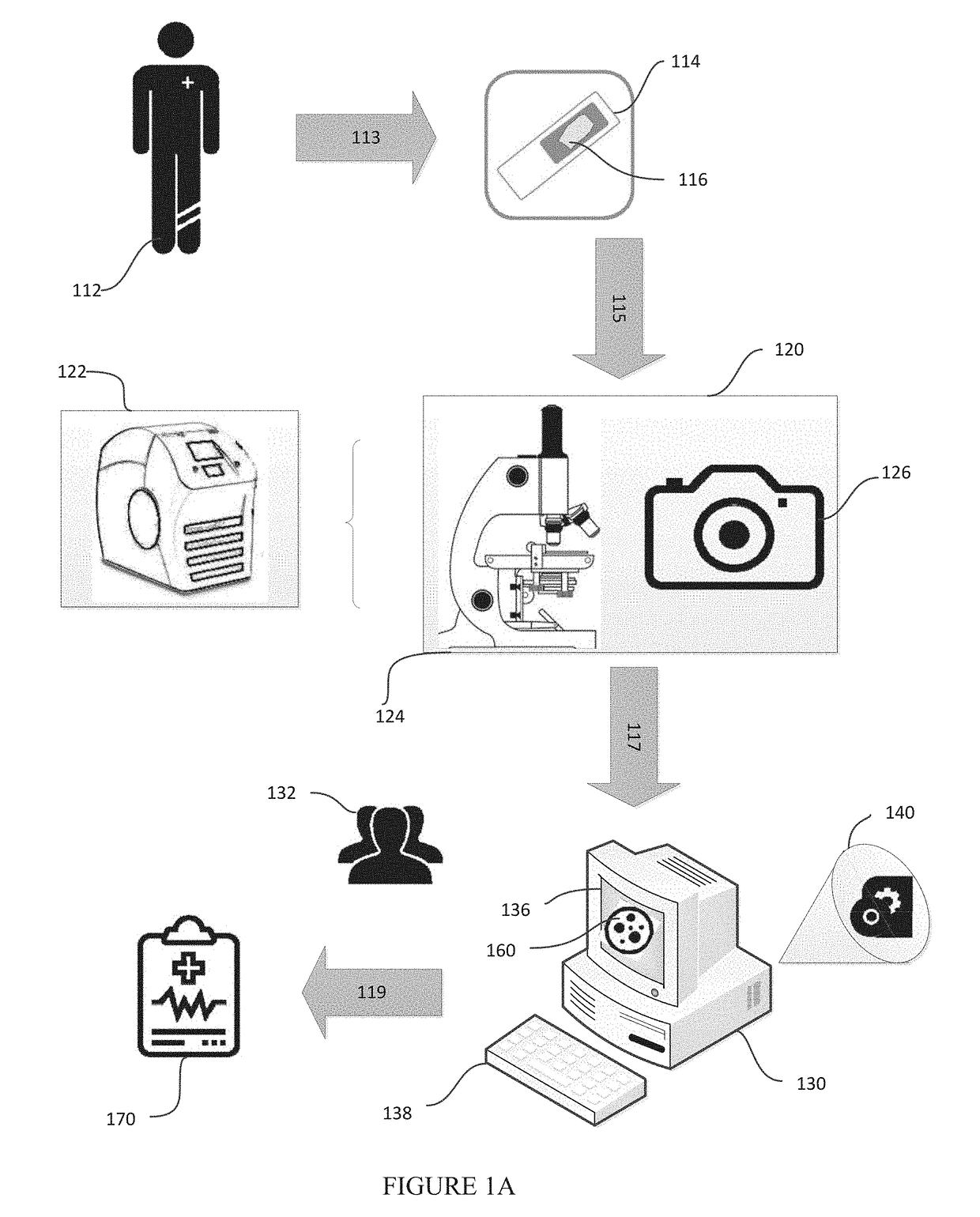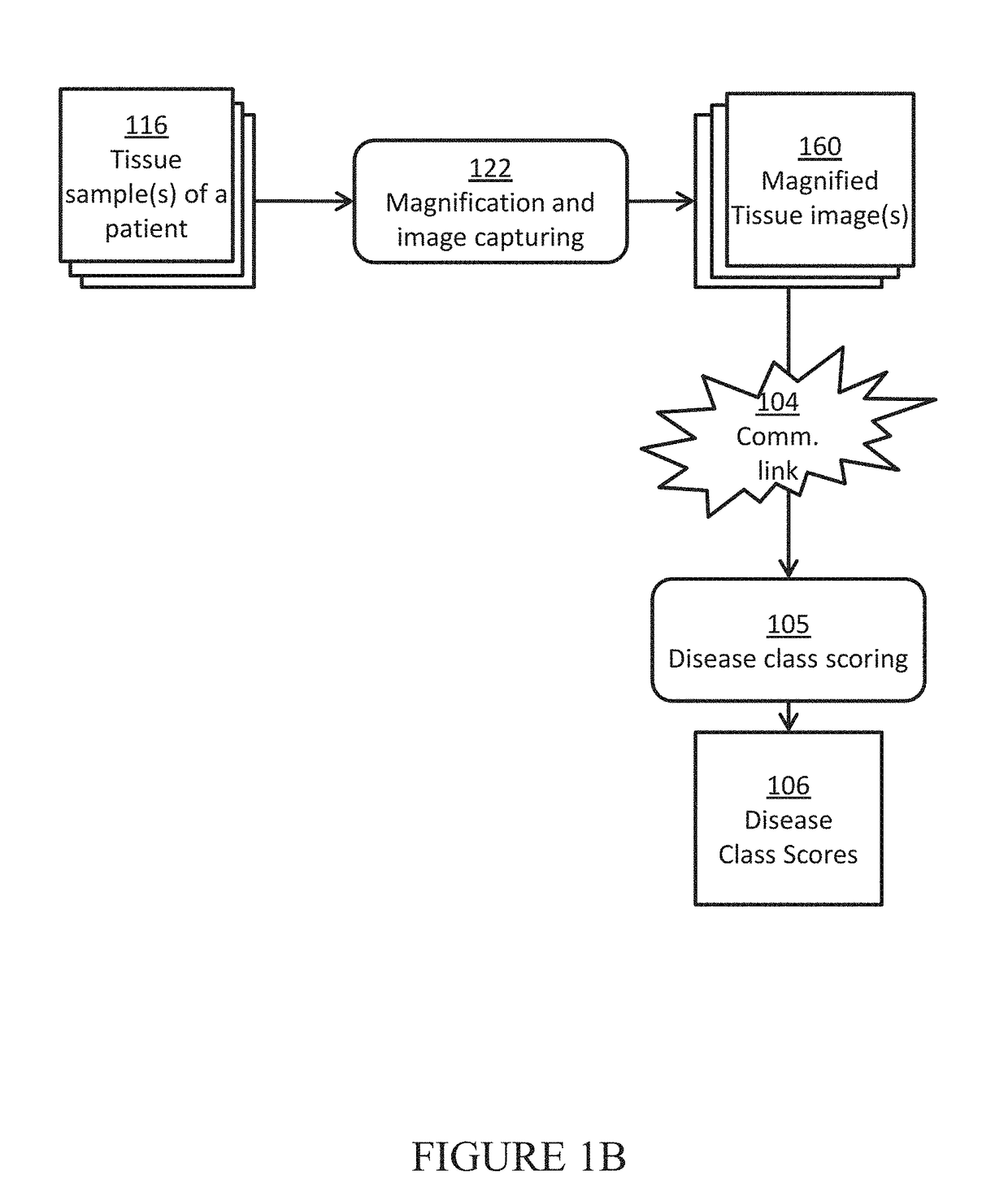Systems & Methods for Computational Pathology using Points-of-interest
a computational pathology and system & method technology, applied in the field of systems & methods for computational pathology using points-of-interest, can solve the problems of long examination time, inconvenient manual examination of tissue samples under microscope, and inconvenient us
- Summary
- Abstract
- Description
- Claims
- Application Information
AI Technical Summary
Benefits of technology
Problems solved by technology
Method used
Image
Examples
example 1
Recommendation
[0086]In this example, a team of pathologist and oncologist use the disclosed system to make treatment recommendations for a prostate cancer patient to improve his chance of remission. Three slides of H&E stained biopsy tissue of prostate of a patient with suspected prostate cancer are prepared and scanned using a whole slide scanner to give the three tissue images for that patient. In a computer, each tissue image is color normalized to give a pre-processed image using H&E color prototypes obtained from a different standard image. In a computer, all possible sub-image windows of size 51×51 from each pre-processed image are extracted one by one, and given as an input to a pre-trained deep convolutional neural network to determine if these have an epithelial nucleus centroid at their centers. All pixel locations designated as centroids of epithelial nuclei are points-of-interest (POIs). In another computer, a second pre-trained deep convolutional neural network is used ...
example 2
& Telemedicine
[0087]In this example, we describe the possibility of setting up mobile cancer screening and telemedicine camps made possible through a potential triage embodiment of the our system for populations without access to good healthcare. A mobile screening camp for identifying people at risk for head-and-neck or cervical cancer is organized in a remote village without access to a good hospital or a pathologist. People go to a lab in a van, where their mouth or cervical swabs (PAP smears) are taken by a nurse. A technician stains the tissues with hematoxylin and eosin in another part of the van, and puts it under a microscope attached to a smartphone, wherein the smartphone is an embodiment of both the image capturing component and the computer component described in this disclosure. One of the modules running on the smartphone is used to enter patient details and capture images of the view from the microscope. These images of a patient are passed to the pre-processing modul...
example 3
Planning
[0088]In this example, we describe how extra information provided to a pathologist or an oncologist using the disclosed system and methods may be used to develop individualized treatment plans for two patients. Current clinical diagnosis practices would have likely led to the same treatment plan for both. A patient with suspected breast lump checks in to a clinic for a mammogram. The mammogram reveals a potential tumor whose biopsy is taken. The tissue extracted from the biopsy is cut into four adjacent sections and stained with hematoxylin+eosin (H&E), HER2neu, ER, and PR stains respectively. Conventionally, the presence of cancer is ascertained through the microscopic examination of H&E, while the clinical decision making starting from determination of sub-type of cancer to treatment planning is done through the examination of ER, PR, and HER2neu. If the patient is assessed to be a case of 3+ on a scale of 0, 1, 2+, and 3+ in HER2 positivity determined by examination of HE...
PUM
 Login to View More
Login to View More Abstract
Description
Claims
Application Information
 Login to View More
Login to View More - R&D
- Intellectual Property
- Life Sciences
- Materials
- Tech Scout
- Unparalleled Data Quality
- Higher Quality Content
- 60% Fewer Hallucinations
Browse by: Latest US Patents, China's latest patents, Technical Efficacy Thesaurus, Application Domain, Technology Topic, Popular Technical Reports.
© 2025 PatSnap. All rights reserved.Legal|Privacy policy|Modern Slavery Act Transparency Statement|Sitemap|About US| Contact US: help@patsnap.com



